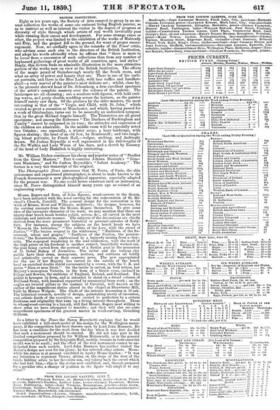BRITISH INSTITUTION.
Eight or ten years ago, the Society of Arts essayed to group in an an- nual collection the works of some one eminent living English painter, so as to instruct as well as interest the visitor in the degree of progress or i
diversity of style through which artists of real worth invariably pass while running their career and development. For some strange cause or other the project was limited to the exhibition of the works of Mulready and Etty, and the project fell to the ground, for want of proper encou- ragement. Now, we cordially agree in the remarks of the Times' critic, who advises some such aim to the directors of the British Institution, and adopt his words advisedly when he affirms that " there is more to be learnt from a succession of such collections than from any number of haphazard gatherings of great works of all countries, ages, and styles." Haply, this dictum finds an admirable illustration in the more attractive portion of the works now on view at the British Institution. The efforts of the magic pencil of Gainsborough nearly fill the South room, and what an array of power and beauty they are. There is one of his earli- est portraits, and there is the Blue Lady, with lace ruffles and handker- ohief-a very marvel of the painter's most delicate art ; whilst, close by, is the pleasant shrewd head of Dr. Schomberg, a firm excellent specimen of the artist's complete mastery over the colours of the palette. The landscapes are all charming ; one a seashore with figures, with bold curl- ing waves, and gusty cloulds scudding across the horizon, as the painter himself surely saw them. Of the pictures by the older masters, the most interesting is that of the " Virgin and Child, with St. John," which created so great a sensation at Manchester, and which, having passed for a work of Ghirlandajo, turns out to be assuredly an unfinished composi- tion by the great Michael Angelo himself. The Tintorettos are all grand specimens ; and among the Rubenses "The Duchess of Buckingham and Family" cannot be surpassed in its tone ; the attitudes and expression of the children are admirable. In the middle room will be especially noted two °stades ; one especially, a winter scene, a hazy landscape, with figures skating ; the head of an old Jew, by Rembrandt ; and two laugh- ing kitcat portraits, by Frank Hall,-vulgar, striking and dashingly drawn. Sir Joshua Reynolds is well represented in his full-lengths of the Sir Watkin and Lady Wynn of his days, and a sketch by Romney of the head of Lady Hamilton is highly interesting.


























 Previous page
Previous page